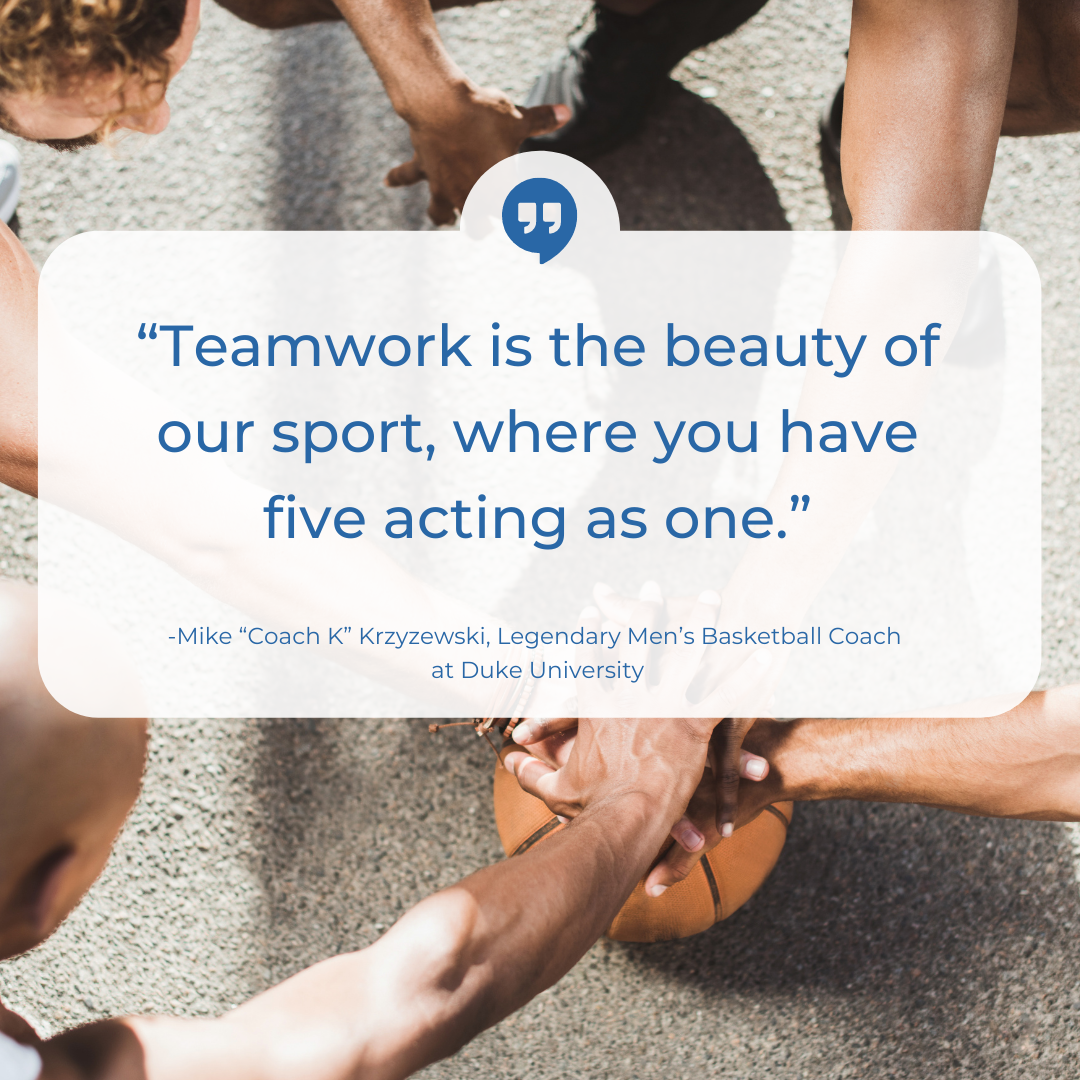
Part 1 / Integration Management Office (IMO) Playbook: Your Coach’s Handbook to M&A
Adapted from The Art of M&A Integration for Maximum Results
Famed basketball coach Bobby Knight wrote a defense playbook called Let’s Play Defense in 1968 that is still a prized possession and guide for many coaches over 50 years later. The following year he published Let’s Get a Good Shot – initially available for $1.50 and $2.00 respectively, a first edition will cost you almost $1,500 today. That’s a pretty good ROI. Not only did Coach Bobby Knight know what it took to win, he knew that preparation was the key to that success, and he documented it – to help coach his team to execute consistently.
cost you almost $1,500 today. That’s a pretty good ROI. Not only did Coach Bobby Knight know what it took to win, he knew that preparation was the key to that success, and he documented it – to help coach his team to execute consistently.
At M&A Leadership Council training sessions, we frequently repeat the phrase, “M&A is a team sport.” Like college basketball, the Integration Leader can be compared to the head coach, and the respective IMO team members and functional leaders and team members are the players. Some players are your starters – entirely dedicated to M&A, highly experienced, reliable under pressure and want the ball in their hands when it counts. Others might be part-time resources that do M&A from time to time “by coming off the bench” for specific assignments or periods, specialists, or role players. Regardless of role, all M&A team players need to know what plays to run and the “game time” expectations for specific situations, ultimately scoring synergy points and winning the game of M&A. That’s where your coach’s handbook – the IMO M&A Playbook - comes in. How will your M&A team execute consistently on each new deal without it?
First Things First – What is an IMO Playbook?
A quick caution is in order. There are as many different definitions of playbooks as there are acquirers. We generally recommend that companies think about them this way:
- IMO Playbook. Start with the enterprise-wide viewpoint of how integration should work for all functions and processes involved. We call this the IMO Playbook. Ideally, it should support the company’s entire M&A lifecycle end-to-end and coordinate all functions, processes, and governance roles across all phases of the lifecycle. By answering the question for all players, “how do we play together through the entire lifecycle?” a well-designed IMO playbook becomes an indispensable component to any successful M&A integration. Defining the overall approach to M&A, provides the organizing construct for resource planning and consistent deployment of the proper analyses, tools, decisions and deliverables to efficiently support a consistent, repeatable process.
- Functional (and Process) Work-Stream Playbooks. Once the enterprise level is mapped and agreed, now it’s time to align all function and process-specific playbooks to the same enterprise phases, processes and roles. Ideally, your functional and process playbooks should define what each work-stream is responsible to do or deliver at each phase of the enterprise process.
 We typically distinguish between “playbooks,” which in essence represent organizational M&A capability and processes, and detailed due diligence or integration work plans (sometimes called the IPOR or integration program of record) which include the much more detailed project plan level objectives, milestones, tasks, timelines, and accountabilities. Both are essential, and we would argue that the IPOR is a mission-critical component of a successful playbook, but not “the playbook.”
We typically distinguish between “playbooks,” which in essence represent organizational M&A capability and processes, and detailed due diligence or integration work plans (sometimes called the IPOR or integration program of record) which include the much more detailed project plan level objectives, milestones, tasks, timelines, and accountabilities. Both are essential, and we would argue that the IPOR is a mission-critical component of a successful playbook, but not “the playbook.”
Because M&A is not a permanent position for most people in your organization, having a reference for processes and guidance on how to complete the tasks is critically important. Companies must create a “single source of truth” where the integration team goes to find answers to questions like “how do we fit” or “where do we enter” or “what do we do?” This type of M&A playbook introduces the team to the process and aligns your team on value creation. It keeps them focused on value-capture, so they don't get distracted, reduces ambiguity and uncertainty, and improves speed to value.
What’s the ROI for IMO Playbooks?
If your company is considering updating and upgrading its IMO playbook, we’d like to provide a quick coaching insight. There are a lot of bad examples and painful playbook experiences out there. You may have already encountered some pushback with questions such as “how long will that take?” and “how much will it cost.” And, “oh, by the way, here’s the 300-page playbook we did ten years ago that hasn’t been used since.” Fortunately, that’s NOT what we are talking about. Today’s M&A needs a fast, efficient “grab and go” way to consistently execute your agreed way to do M&A, not some theoretical desk reference.
Done well, IMO playbooks create a significant efficiency play -- just like a best-in-class service delivery model, a best-in-class IMO playbook will save time and hassle, optimize the entire team’s time and efforts and lead to better results. For companies planning on doing multiple deals over time, however, there are three other important results and benefits from having a best-in-class IMO Playbook.
First, it becomes part of your “M&A brand.” Frankly, your M&A success has far less to do with how many deals you’ve completed and MUCH more to do with how consistently and effectively you put your “best foot forward” with each of the leaders and employees of each new TargetCo. The right playbook won’t automatically keep you out of the ditch, but your TargetCo will EXPECT you to have one and know how to apply it to them! If not, here comes chaos!
Second, given the fact that there are typically many different specialized advisors and external service providers involved in every M&A (“it’s a team sport”, remember?) you don't have time to re-orient each new advisor’s own proprietary roadmap. The best acquirers make the M&A lifecycle their own, reflecting how they choose to do M&A most effectively, then align their advisors to support running that process rather than the other way around. 
Finally, corporate M&A teams are getting hit hard by the Great Resignation and a highly competitive market for skilled M&A talent. On average, experienced internal M&A team members’ professional tenure is only three to five years. If you have a best-in-class Playbook that provides more of a real-time, self-service posture and reflects your company’s operating model - you’ll be able to onboard new resources much more quickly and effectively.
Coach Knight’s basketball playbooks have increased in value 100-fold. An IMO M&A Playbook that is well-developed, regularly updated with new insights and lessons learned, and most importantly, consistently executed against, will produce similar results. The time you invest in your team, the process documentation and improvement, and maintaining your playbook will experience an exponential return, delivering consistent value to your stakeholders. The IMO Playbook documents your M&A capability and readiness. It makes it a repeatable value-driven process front-to-back – and we think that’s a winning strategy that would even impress Bobby Knight.
For information on Essential Components for Your IMO Playbook, be sure to read Part 2!
_____________________________________________________________________________
This article is an excerpt from, and adaptation of, a recent training session from The Art of M&A Executing Integration for Maximum Results conducted by M&A Partners, the exclusive integration partner of the M&A Leadership Council. For more information on upcoming M&A Leadership Council training programs, click here.
